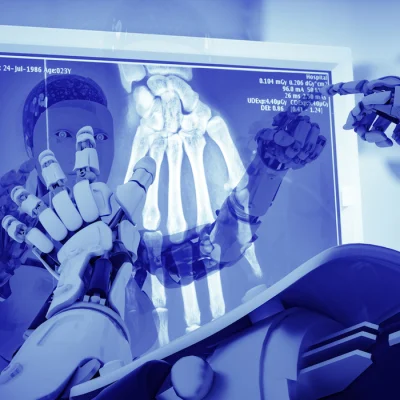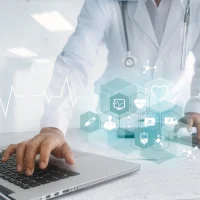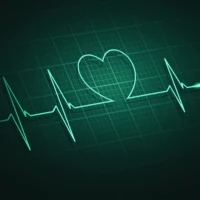More sophisticated technologies such as artificial intelligence are said to hold much promise in improving disease diagnosis. A new systematic review of relevant published articles, for instance, indicates that AI can detect diseases from medical imaging with the same accuracy as clinicians. The review included 82 studies spanning cardiology, breast cancer, respiratory disease, orthopaedic trauma, facial surgery and more.
You might also like: Flagging Aneurysms with AI
While AI didn't outperform human diagnosis, the review team – composed of University Hospitals Birmingham NHS researchers – found deep learning algorithms correctly detected disease in 87% of cases, compared to clinicians' 86% accuracy rate. With regard to identifying healthy medical images, AI and clinicians' accuracy reached 93% and 91%, respectively.
"Within those handful of high-quality studies, we found that deep learning could indeed detect diseases ranging from cancers to eye diseases as accurately as health professionals," said Alastair Denniston, a professor at University Hospitals Birmingham NHS Foundation Trust, who led the review team.
However, as the NHS researchers noted, an important finding of the review is that few studies presented externally validated results or compared the performance of deep learning algorithms and clinicians using the same sample. Of the 82 articles included in this systematic review and meta-analysis, only 25 validated the AI models externally by using medical images from a different population. In addition, just 14 studies directly compared clinician and AI diagnostic abilities side by side.
Also, given the lack of comprehensive studies reviewing the use of AI in clinical practice, the diagnostic potential of deep learning – the use of algorithms trained to detect patterns in unstructured data such as medical images – remains uncertain, according to the review team who published their findings in The Lancet Digital Health journal.
Radiology and image analysis are the most logical areas of application for diagnostic AI, experts say, as machine learning algorithms can easily be trained using currently available data. Of the more than 100 medical imaging AI startups in 2018, the majority were for image analysis, according to Frost & Sullivan, a healthcare consultancy.
To date, the U.S. Food and Drug Administration has approved more than 30 AI algorithms for use in healthcare, including Imagen OsteoDetect (for identifying wrist fractures in bone images), IDx-DR (for detecting diabetic retinopathy in eye scans) and Viz.AI Contact (which discerns signs of stroke in CT scans).
However, experts contend that AI should be viewed as a tool for doctors and not a doctor itself.
"I think really where this is all going is that this is a tool that levels up and lifts the decision support that's already in systems for clinicians and the radiologist," Intel's general manager of health and life sciences David Ryan points out. "It's really an assistive device."
Also, the University Hospitals Birmingham NHS researchers cautioned against drawing strong conclusions about AI's usefulness as an autonomous diagnostic tool.
"Additionally, poor reporting is prevalent in deep learning studies, which limits reliable interpretation of the reported diagnostic accuracy," the NHS researchers wrote. "New reporting standards that address specific challenges of deep learning could improve future studies, enabling greater confidence in the results of future evaluations of this promising technology.”
Source: Healthcare Dive
Image Credit: iStock
Latest Articles
Cardiology, breast cancer, algorithm, Artificial Intelligence, AI, deep learning, diagnostic tools, Clinician, Respiratory Disease, orthopaedic trauma, facial surgery, University Hospitals Birmingham NHS, University Hospitals Birmingham NHS Foundation Trust
A new systematic review of relevant published articles, for instance, indicates that AI can detect diseases from medical imaging with the same accuracy as clinicians.










